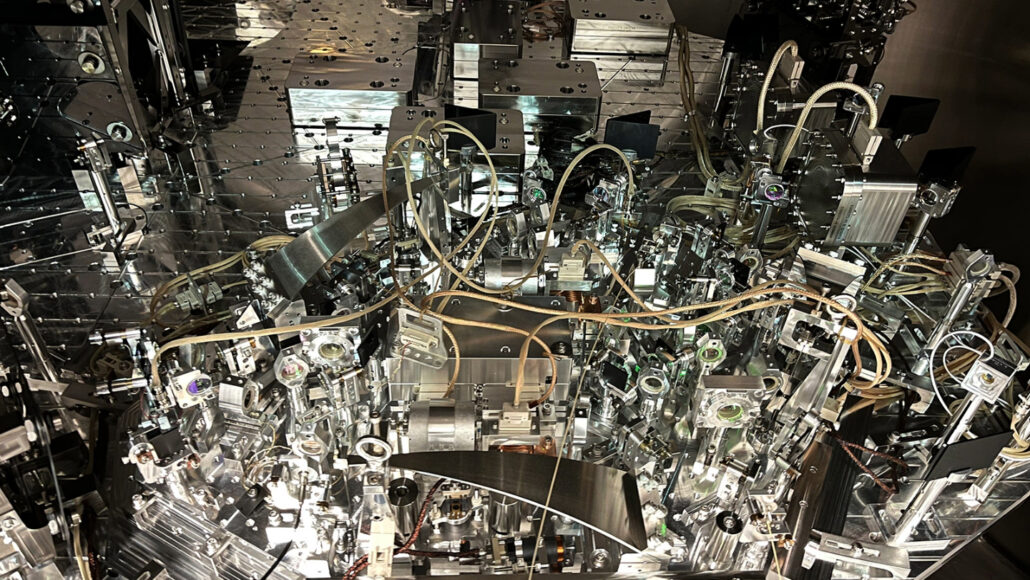Utilizing Quantum 'Squeezing' to Enhance Gravitational Wave Detection in LIGO

Enhancements in the way light is manipulated could significantly improve the operation of gravitational wave observatories.
A recent improvement to the Laser Interferometer Gravitational-Wave Observatory (LIGO), which exploits a quantum rule known as the Heisenberg uncertainty principle, could enable better detection of distortions in space-time resulting from highly dramatic events within the cosmos.
Due to this enhancement, LIGO is now anticipated to identify about 65 percent more clashes amongst large entities such as black holes and neutron stars than it could previously, the researchers detail in their forthcoming Physical Review X paper.
LIGO scientists rely on laser light moving inside a detector between mirrors, which are four kilometers apart, during their gravitational wave research. However, due to a variant of the Heisenberg uncertainty principle, the more knowledge you have about the intensity of light signal, the less knowledgeable you are about its frequency, restricting the effective detection of gravitational waves.
Earlier, in 2019, LIGO researchers decided to utilize quantum "squeezing," decreasing the laser's frequency uncertainty while simultaneously increasing the uncertainty in intensity (Reported by SN on 2/15/2019). This meant the laser power could be increased and LIGO's ability to identify waves of higher frequencies was a result. Nevertheless, enhancing the power further would make identifying lower-frequency waves more challenging as it would introduce a low-frequency noise to the signal.
This issue was addressed in the new study where researchers used quantum squeezing, reducing the laser's intensity uncertainty at low frequencies while also reducing the frequency uncertainty at higher frequencies.
According to physicist Lisa Barsotti from MIT, even next-gen gravitational wave observatories stand to gain from these recent developments. She states, "The beauty is you can do both. You can push the limit of what is possible from the technology of laser power and mirror [design], and then do squeezing on top of that.”
This article has been made possible by the generous contributions by our readers. Support high-quality scientific journalism by donating today.




